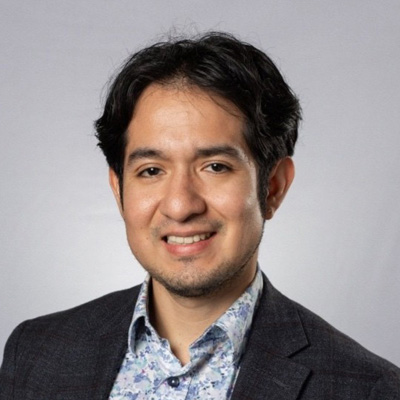
Andre obtained his B.S. in Mechanical Engineering from Colorado School of Mines, with a mix of research experience in haptics and cardiovascular medical devices. He then went on to complete his Ph.D. in Mechanical Engineering at the University of California, Berkeley where he focused on developing large-scale biophysical simulations of mechanosensitive cell-matrix adhesions. Andre’s doctoral research was supported by the National Academies of Science, Engineering, and Medicine, the UC Berkeley College of Engineering, and the Hearts to Humanity Eternal Research Grant. Outside of the NIH, you can find him exploring the city by bike or on foot.
Andre broadly seeks to understand biomechanics across multiple anatomical scales using physics-based simulations. His doctoral work combined the finite element method and molecular dynamics simulations to model how integrin maintains cell adhesion when subjected to external forces. He proposed that alpha5beta1 integrin relies on two binding sites to dynamically strengthen adhesion with fibronectin when under increasing tensile load. After his Ph.D., he joined the MATRICES Lab as a Postdoctoral Fellow in August 2024 to study the interplay between fluid dynamics and sickle cell disease vasculopathy. To do so, he leverages in vivo measurements from transgenic mice with sickle cell disease and incorporates them into computational fluid dynamics models. The models simulate blood flow patterns that may indicate zones of artery damage, as confirmed by histological analysis. Andre also develops fluid-structure interaction models that simulate artery stretching in the presence of pulsatile flow. He aims to build models of patients with sickle cell disease to identify regions in large arteries that are prone to vasculopathy.
